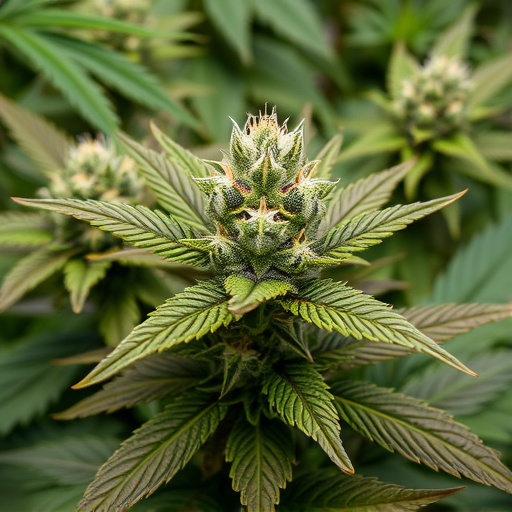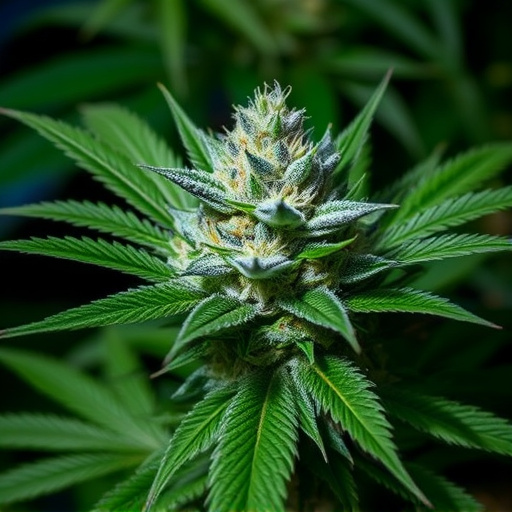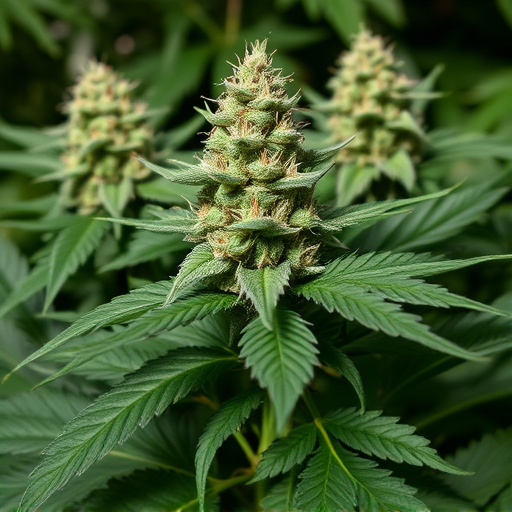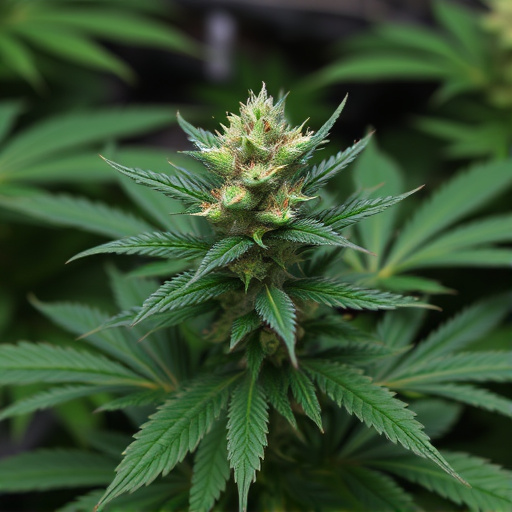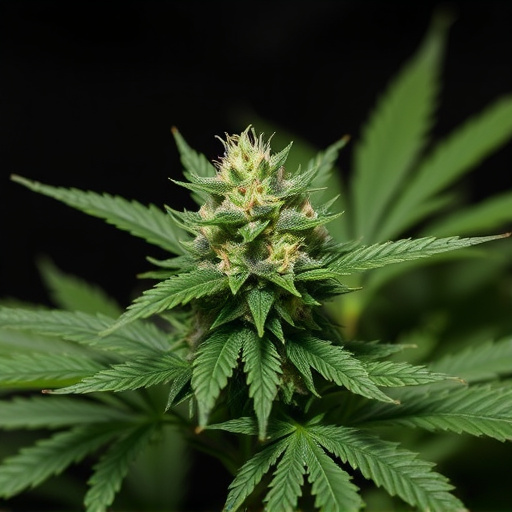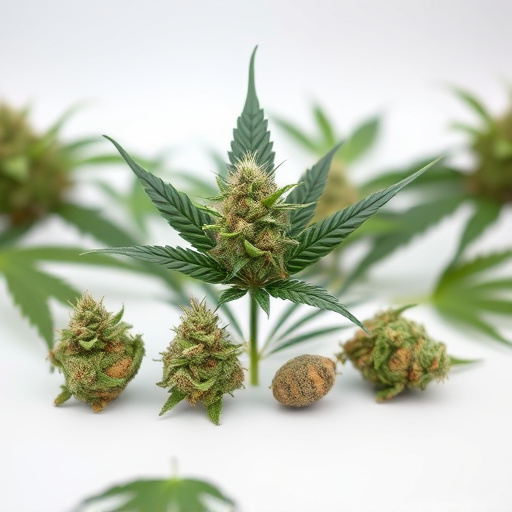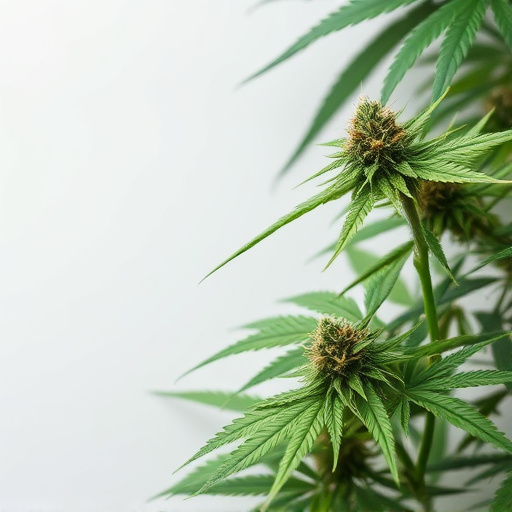The quality of medical marihuana strains is closely tied to the soil's health and nutrient composition. Soil type, particularly clay, sand, and loam, influences nutrient absorption and cannabinoid production, ultimately shaping the strain's unique properties. Loam, with its balanced moisture and drainage, promotes robust plant growth and high-quality flowers by supporting diverse microbes that enhance nutrient accessibility. Precise management of nitrogen, phosphorus, and potassium levels is crucial for cultivators to direct the flavor, aroma, terpene profiles, and therapeutic benefits of medical marihuana strains, ensuring they meet specific medicinal needs.
“Unraveling the intricate relationship between cannabis quality and its growing environment is essential, especially in the context of medical marihuana strains. This article explores the multifaceted factors that shape the final product—from soil composition and nutrient management to environmental conditions like light, temperature, and humidity.
We delve into the science behind these elements, revealing how they influence cannabinoid profiles, terpene diversity, and overall strain quality. By understanding these dynamics, cultivators can optimize their practices to consistently produce superior medical marihuana strains.”
- The Impact of Soil and Nutrient Composition
- – Discuss how different soil types (e.g., clay, sandy, loam) influence nutrient availability and plant growth.
- – Explain the role of essential nutrients like nitrogen, phosphorus, and potassium in cannabis production.
The Impact of Soil and Nutrient Composition
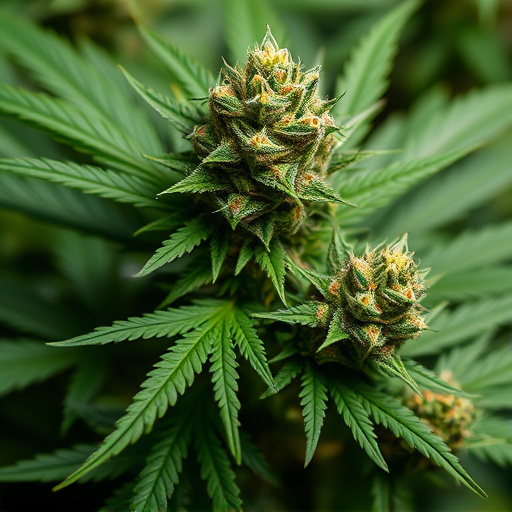
The quality of cannabis is significantly influenced by the soil and nutrient composition in which it grows, particularly for medicinal marihuana strains. Soil health plays a pivotal role in determining the overall profile of the plant. Different nutrient levels can impact the cannabinoid and terpene production, ultimately shaping the strain’s unique properties and effects. For instance, optimal phosphorus levels encourage robust plant growth and development, while balanced nitrogen ensures dense, resinous buds that are highly sought after by cannabis enthusiasts and medicinal users alike.
Moreover, the type of soil and its pH level can greatly affect the absorption of nutrients. Well-managed soils with suitable nutrient ratios promote healthy root systems, enabling plants to efficiently absorb essential elements. This, in turn, contributes to consistent cannabinoid levels, enhancing the consistency and quality of medical marihuana strains. Understanding and manipulating these factors are crucial for cultivators aiming to produce top-tier cannabis products that cater to specific medicinal needs.
– Discuss how different soil types (e.g., clay, sandy, loam) influence nutrient availability and plant growth.
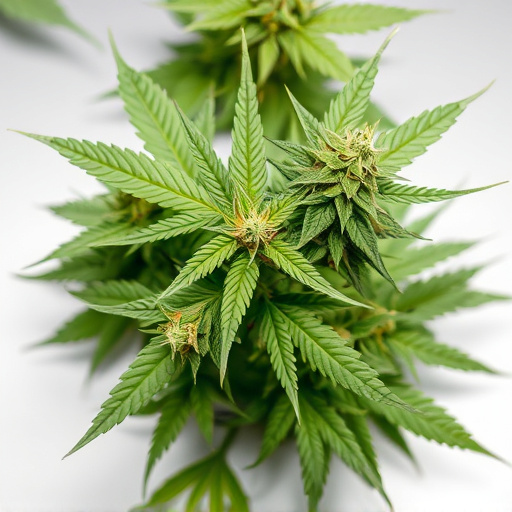
Different soil types significantly impact cannabis plants, influencing both nutrient availability and overall growth. Clay soils, for instance, are known for their high water-holding capacity, which can be beneficial as it ensures a consistent moisture supply to the roots. However, excessive moisture may lead to root rot, affecting the plant’s health and the quality of medical marihuana strains. On the other hand, sandy soils drain quickly, providing excellent aeration but often requiring additional amendment to retain essential nutrients. Loam, a balanced mix of clay and sand, offers ideal drainage and moisture retention, creating an optimal environment for cannabis plants to thrive and produce high-quality flowers.
The type of soil can directly impact nutrient uptake, affecting the final characteristics of medical marihuana strains. Plants grown in well-structured loam may access a wider range of nutrients more efficiently due to its ability to support a diverse microbial community, which breaks down organic matter into accessible forms. This balanced nutrient availability is crucial for cannabis plants, as it enables them to develop robust structures and accumulate desirable compounds, ensuring the cultivation of superior strains.
– Explain the role of essential nutrients like nitrogen, phosphorus, and potassium in cannabis production.
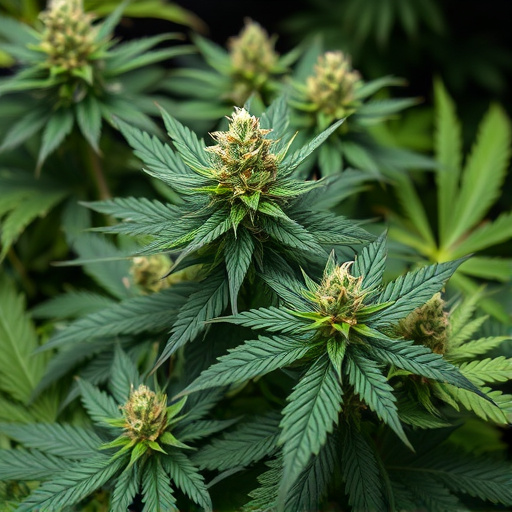
The success of cultivating high-quality cannabis lies in understanding and meticulously managing the growing environment, with a significant focus on nutrient availability. Essential nutrients such as nitrogen (N), phosphorus (P), and potassium (K) play a pivotal role in the development and final characteristics of medical marihuana strains. These macronutrients are vital for various physiological processes, including chlorophyll synthesis, protein production, and cellular growth.
In cannabis cultivation, maintaining an optimal nutrient balance is crucial. Nitrogen supports lush foliage growth, while phosphorus is essential for root development and overall plant strength. Potassium enhances photosynthesis and ensures proper water balance. By carefully monitoring and adjusting nutrient levels, growers can influence the flavor, aroma, terpene profiles, and potential therapeutic benefits of the final product, ensuring that each cannabis strain reaches its full potential.
In conclusion, understanding the intricate relationship between growing environments and nutrient availability is pivotal for cultivating high-quality medical marihuana strains. The optimal balance of soil types, essential nutrients, and environmental conditions significantly impacts cannabis growth and final product. By carefully considering these factors, growers can ensure consistent, robust, and superior yields that meet the stringent standards required in the medical cannabis industry.
